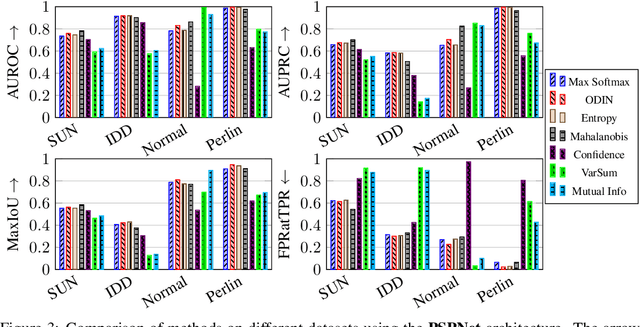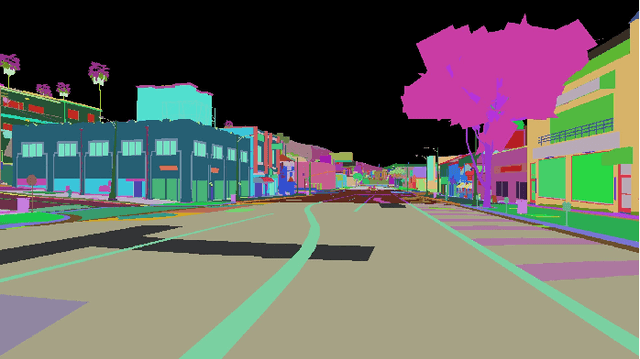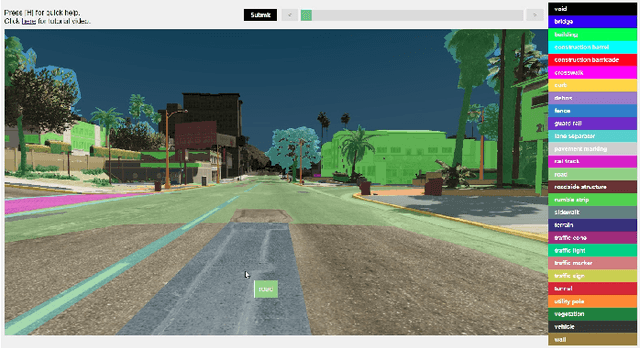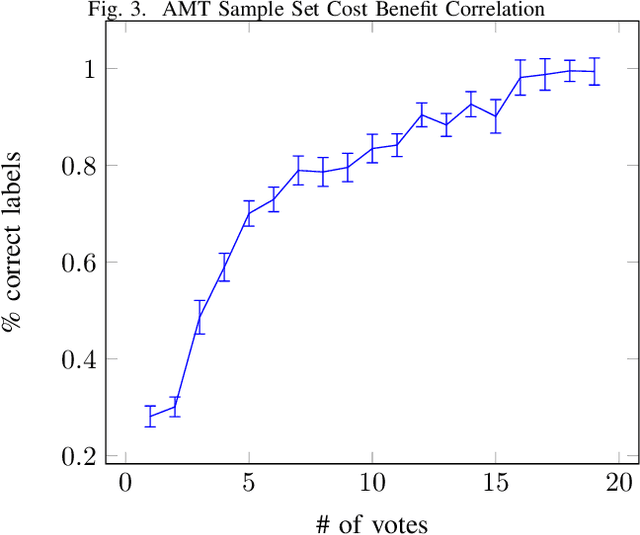Matt Angus
Efficacy of Pixel-Level OOD Detection for Semantic Segmentation
Nov 07, 2019



Abstract:The detection of out of distribution samples for image classification has been widely researched. Safety critical applications, such as autonomous driving, would benefit from the ability to localise the unusual objects causing the image to be out of distribution. This paper adapts state-of-the-art methods for detecting out of distribution images for image classification to the new task of detecting out of distribution pixels, which can localise the unusual objects. It further experimentally compares the adapted methods on two new datasets derived from existing semantic segmentation datasets using PSPNet and DeeplabV3+ architectures, as well as proposing a new metric for the task. The evaluation shows that the performance ranking of the compared methods does not transfer to the new task and every method performs significantly worse than their image-level counterparts.
Unlimited Road-scene Synthetic Annotation (URSA) Dataset
Jul 16, 2018



Abstract:In training deep neural networks for semantic segmentation, the main limiting factor is the low amount of ground truth annotation data that is available in currently existing datasets. The limited availability of such data is due to the time cost and human effort required to accurately and consistently label real images on a pixel level. Modern sandbox video game engines provide open world environments where traffic and pedestrians behave in a pseudo-realistic manner. This caters well to the collection of a believable road-scene dataset. Utilizing open-source tools and resources found in single-player modding communities, we provide a method for persistent, ground truth, asset annotation of a game world. By collecting a synthetic dataset containing upwards of $1,000,000$ images, we demonstrate real-time, on-demand, ground truth data annotation capability of our method. Supplementing this synthetic data to Cityscapes dataset, we show that our data generation method provides qualitative as well as quantitative improvements---for training networks---over previous methods that use video games as surrogate.
 Add to Chrome
Add to Chrome Add to Firefox
Add to Firefox Add to Edge
Add to Edge